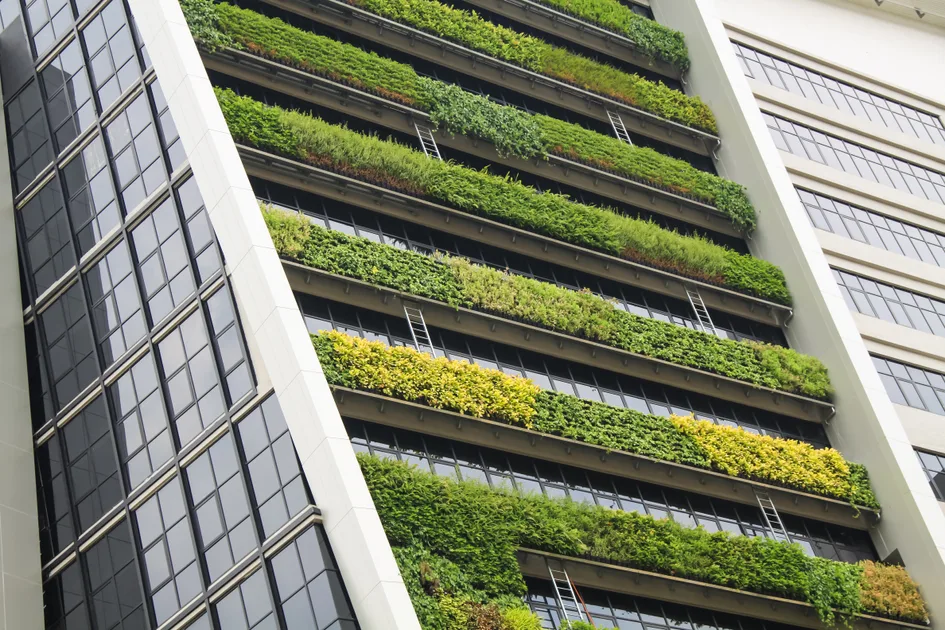
April 29 2024
Carbon Sequestration
Live green walls play a pivotal role in carbon sequestration, actively absorbing carbon dioxide (CO2) from
the atmosphere during photosynthesis. Plants utilize CO2 as a raw material to produce oxygen, thereby
helping to mitigate the greenhouse effect. According to a study published in the Journal of Applied Ecology,
green walls have been shown to significantly reduce CO2 levels in urban environments, thereby contributing
to overall carbon neutrality (Bowler et al., 2010).
Thermal Regulation
Another significant benefit of live green walls lies in their ability to regulate temperature. Through the
process of evapotranspiration, plants release moisture into the air, creating a cooling effect in the
surrounding environment. This natural cooling mechanism can help reduce the reliance on mechanical cooling
systems, consequently lowering energy consumption and greenhouse gas emissions associated with air
conditioning (Takebayashi & Moriyama, 2007).
Air Quality Improvement
Urban areas often grapple with poor air quality due to vehicular emissions, industrial activities, and
other sources of pollution. Live green walls act as natural air purifiers, filtering out harmful pollutants
and particulate matter while releasing fresh oxygen into the atmosphere. Research published in the Journal
of Experimental Botany has demonstrated the effectiveness of plants in removing volatile organic compounds
(VOCs) and other airborne pollutants, thus improving indoor and outdoor air quality (Srivastava et al.,
2018).
Biodiversity Enhancement
Live green walls provide habitat and refuge for various forms of wildlife, including birds, insects, and
microorganisms. By fostering biodiversity within urban environments, these installations contribute to the
conservation of native species and promote ecological resilience. Moreover, the presence of vegetation in
urban settings helps mitigate the urban heat island effect, wherein densely populated areas experience
higher temperatures compared to surrounding rural areas (Akbari et al., 2001).
Psychological Well-being
Beyond their environmental benefits, live green walls also have positive implications for human health and
well-being. Numerous studies have highlighted the therapeutic effects of exposure to nature, including
reduced stress levels, improved cognitive function, and enhanced mood (Bringslimark et al., 2009; Kaplan,
1995). Incorporating greenery into built environments through the use of live green walls can create
healthier, more vibrant spaces that promote human flourishing.
In conclusion, live green walls represent a powerful tool in the quest for achieving net zero goals. By
harnessing the natural processes of plants, these living installations offer a sustainable solution to
mitigate carbon emissions, enhance air quality, regulate temperature, and promote biodiversity. As we
continue to confront the challenges of climate change, embracing innovative solutions like live green walls
is essential for building a more sustainable future.